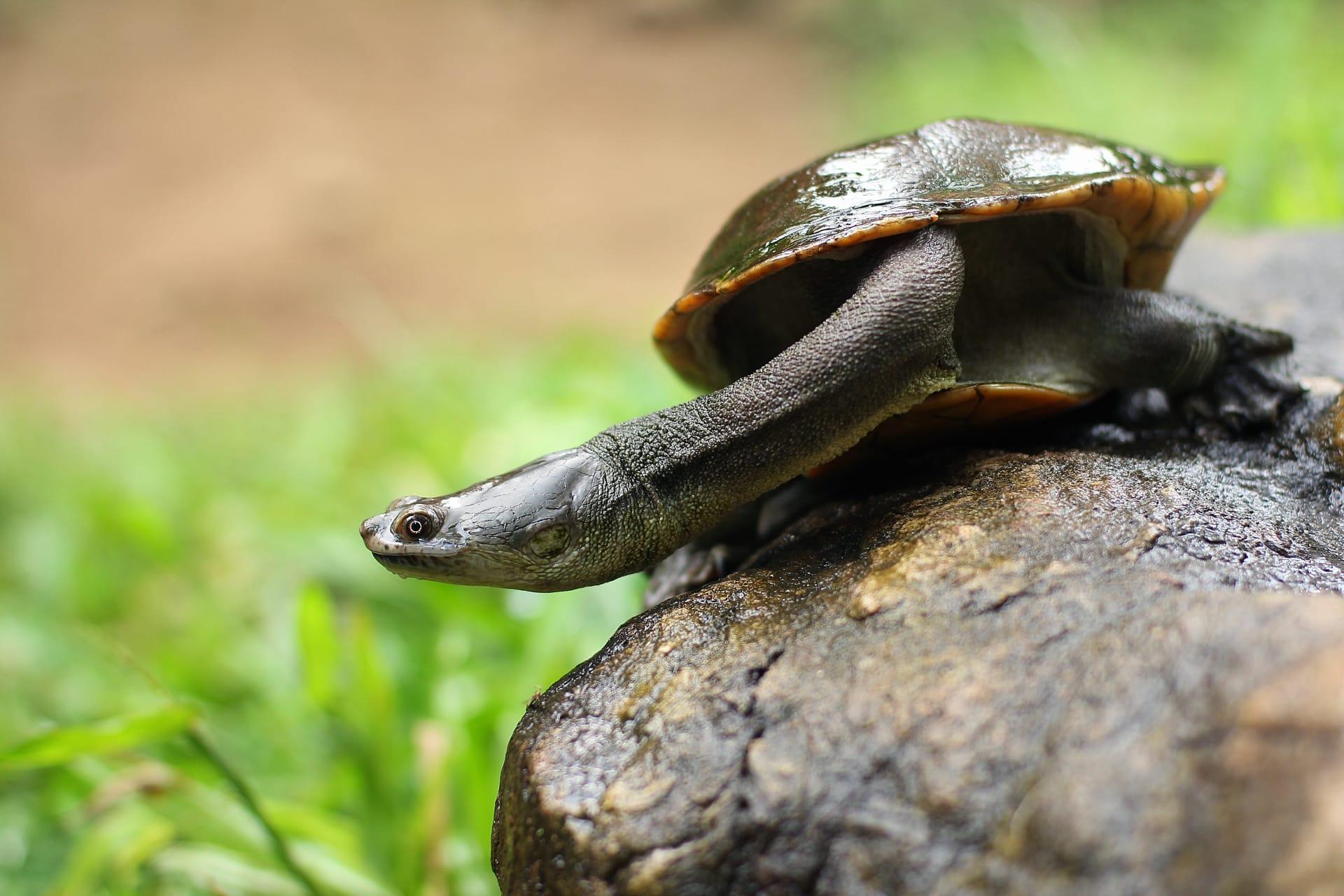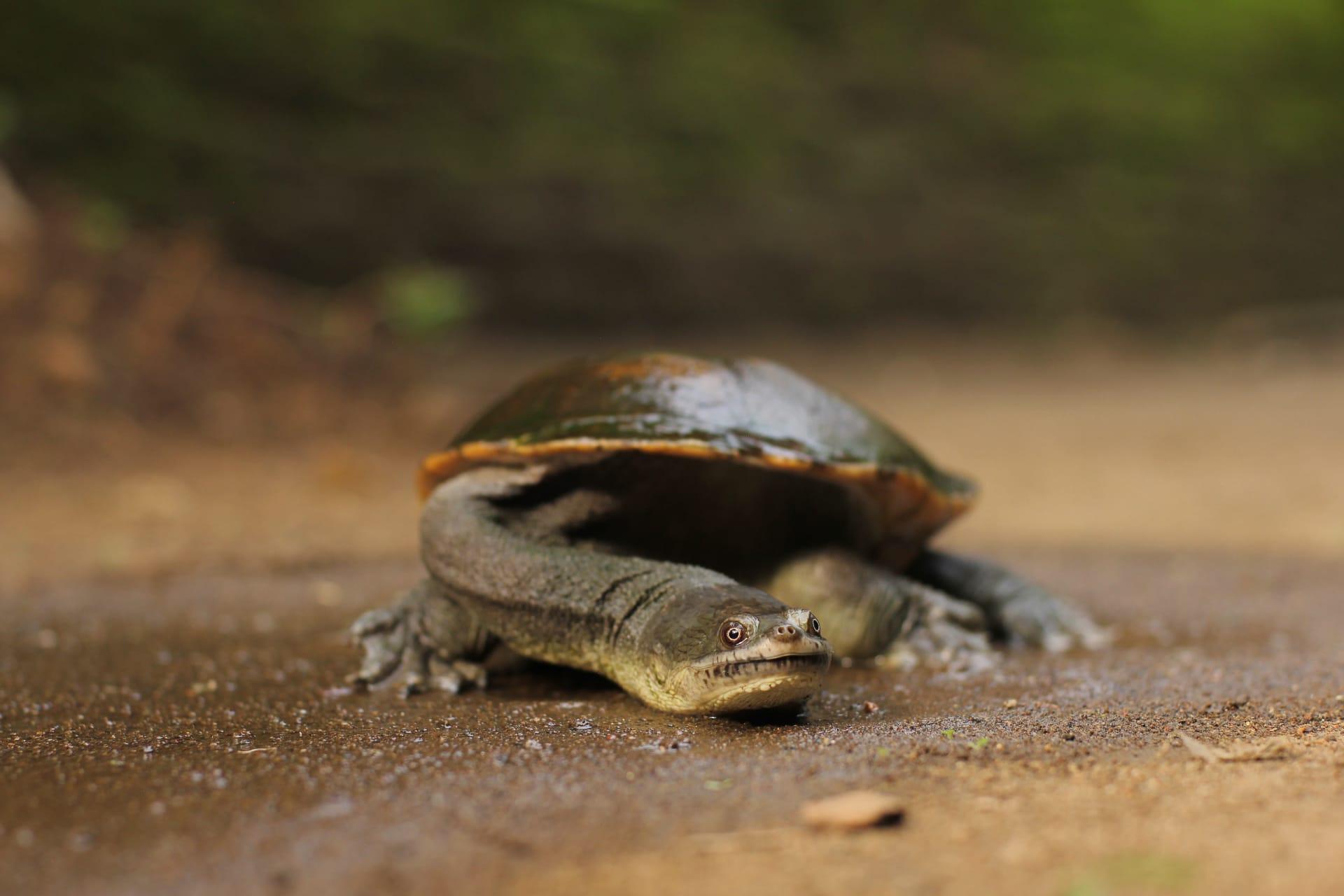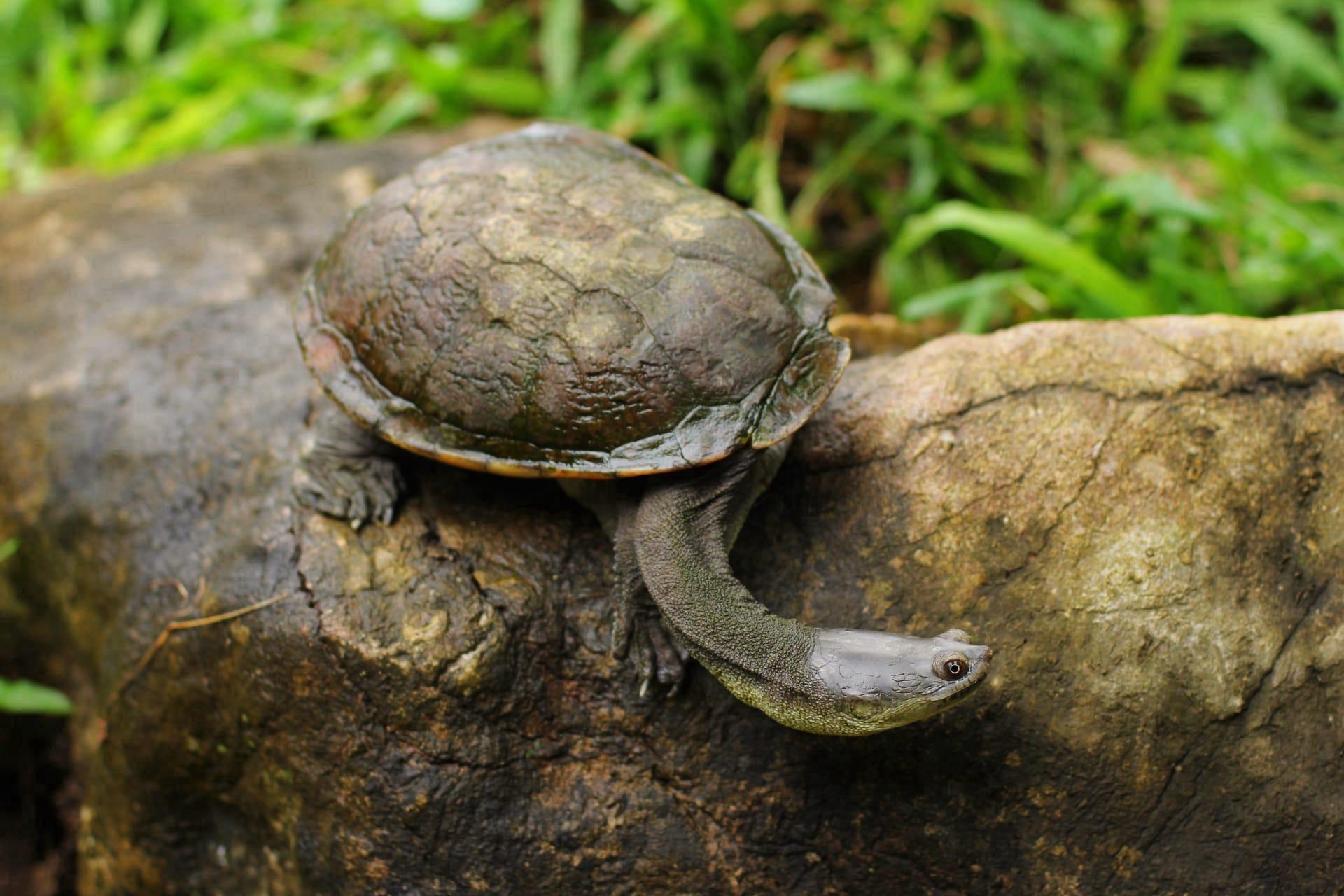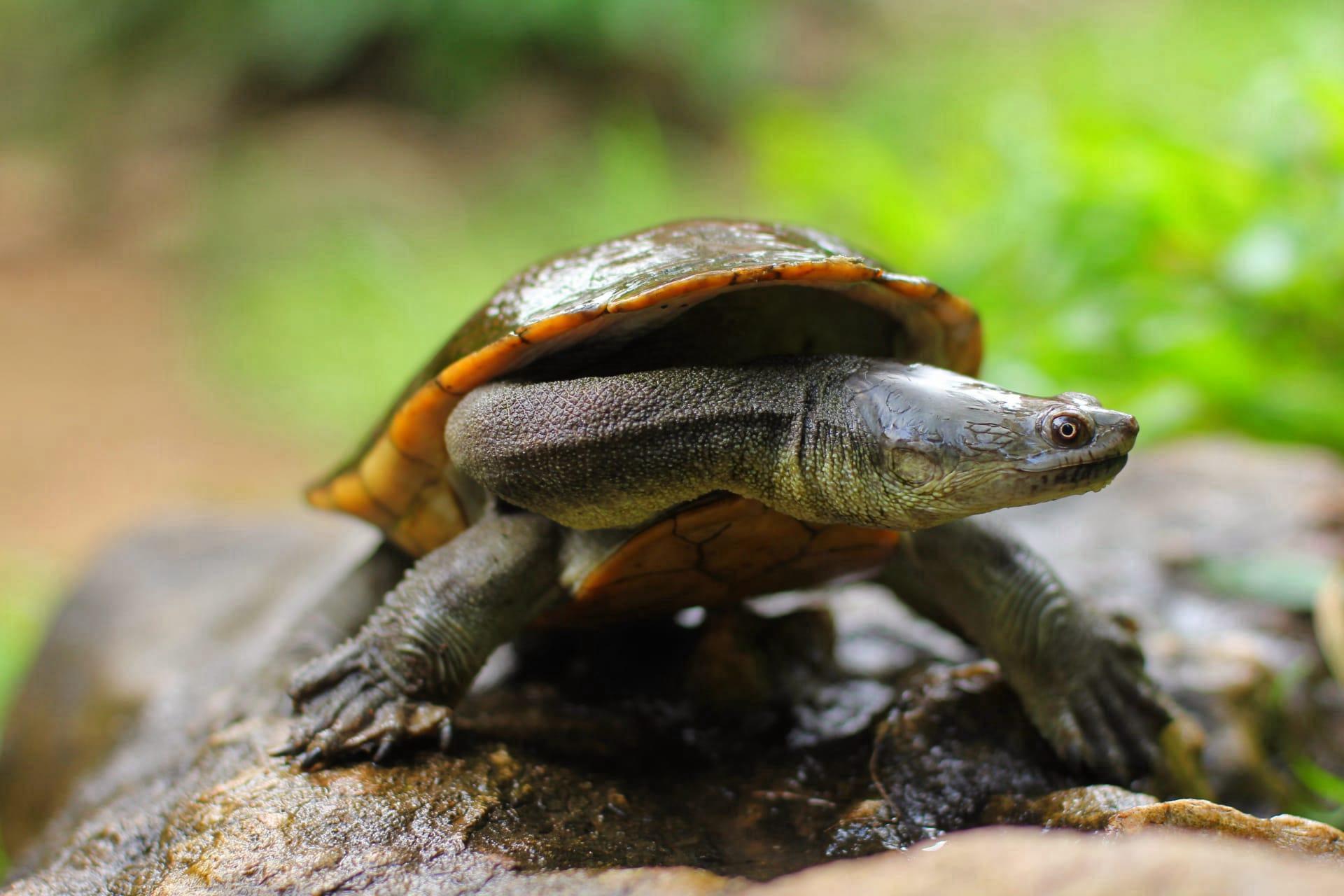Snake Necked Turtle
- Home /
- Mini Encyclopedia /
- Animal /
- Snake Necked Turtle
1
The Snake Necked Turtle, scientifically referred to as Chelodina longicollis, is a fascinating species classified within the family Chelidae, known for their distinctive long necks. This species is a part of the order Testudines, encompassing turtles and tortoises. Uniquely adapted, their long necks are almost as long as their carapace, or shell, which typically measures around 25 centimeters (10 inches) in length. The carapace is generally flat, broad, and oval-shaped with a distinct rim.
The Snake Necked Turtle is predominantly found in Australia, specifically in the eastern part of the country. Their habitat extends from Queensland through New South Wales to Victoria, inhabiting freshwater environments such as lakes, swamps, and rivers. This turtle prefers slow-moving waters where it can easily forage for food. The temperature and quality of the water, along with the availability of food sources and nesting sites, significantly influence their distribution within these regions.

2
Question: Is it true that Snake Necked Turtles can extend their necks to a length longer than their shell?
Answer: Contrary to popular belief, while the neck of a Snake Necked Turtle is impressively long, it does not extend longer than the shell. In reality, the length of the neck is roughly the same as that of the carapace. This remarkable adaptation allows the turtle to swiftly strike at prey with a sudden extension of its neck, a technique advantageous in their aquatic hunting environment. Their diet primarily consists of fish, crustaceans, and aquatic insects, which they capture with this swift neck-strike strategy.

3
The Snake Necked Turtle employs several survival strategies to thrive in its environment. Its distinct long neck serves not just as a hunting tool but also as a snorkel. When resting underwater, the turtle can extend its neck to the surface to breathe without exposing much of its body, thereby reducing the risk of predation. Their mottled brown and green shell provides excellent camouflage among aquatic vegetation and muddy waters, aiding in both predator evasion and stealthy hunting.
Reproduction is another key survival strategy for this species. Female Snake Necked Turtles lay 4 to 24 eggs in a clutch, often in sandy or soft soil near water bodies. The incubation period varies from 120 to 150 days, depending on environmental conditions. Temperature plays a crucial role in determining the sex of the hatchlings, a phenomenon common in many reptile species. This temperature-dependent sex determination ensures a balanced sex ratio in the population, critical for the species' long-term survival.

4
In the ecosystem, the Snake Necked Turtle plays a significant role as both predator and prey. As a predator, it contributes to controlling the population of aquatic invertebrates and small fish, maintaining a balance in the aquatic food web. Their hunting method, involving the sudden extension of their long neck to capture prey, is unique among aquatic turtles and highlights their specialized ecological niche.
As prey, the Snake Necked Turtle is an important food source for larger predators, including birds of prey and larger aquatic animals. The eggs and hatchlings are particularly vulnerable, often preyed upon by mammals, birds, and even large fish. This predation plays a crucial role in regulating their population and maintaining a dynamic balance in their habitat's ecosystem.

5
Film: "The Secret Life of Turtles" is a noteworthy documentary produced in Australia in 2018. This film offers an in-depth look at various turtle species, including the Snake Necked Turtle. It showcases their unique behaviors, survival strategies, and the challenges they face in their natural habitats, emphasizing the importance of conservation efforts.
Book: "Australian Freshwater Turtles" by John Cann, published in the United States in 1998, provides a comprehensive overview of the different turtle species found in Australian freshwater systems. This book includes detailed information on the Snake Necked Turtle, covering aspects such as habitat, behavior, and conservation status.
Book: "Turtles of the World" by Carl H. Ernst and Roger W. Barbour, published in the United States in 2000, is a globally recognized reference. It features extensive details on various turtle species, including the Snake Necked Turtle. The book discusses their global distribution, ecological roles, and the challenges they face in the wild, offering valuable insights for researchers and enthusiasts alike.